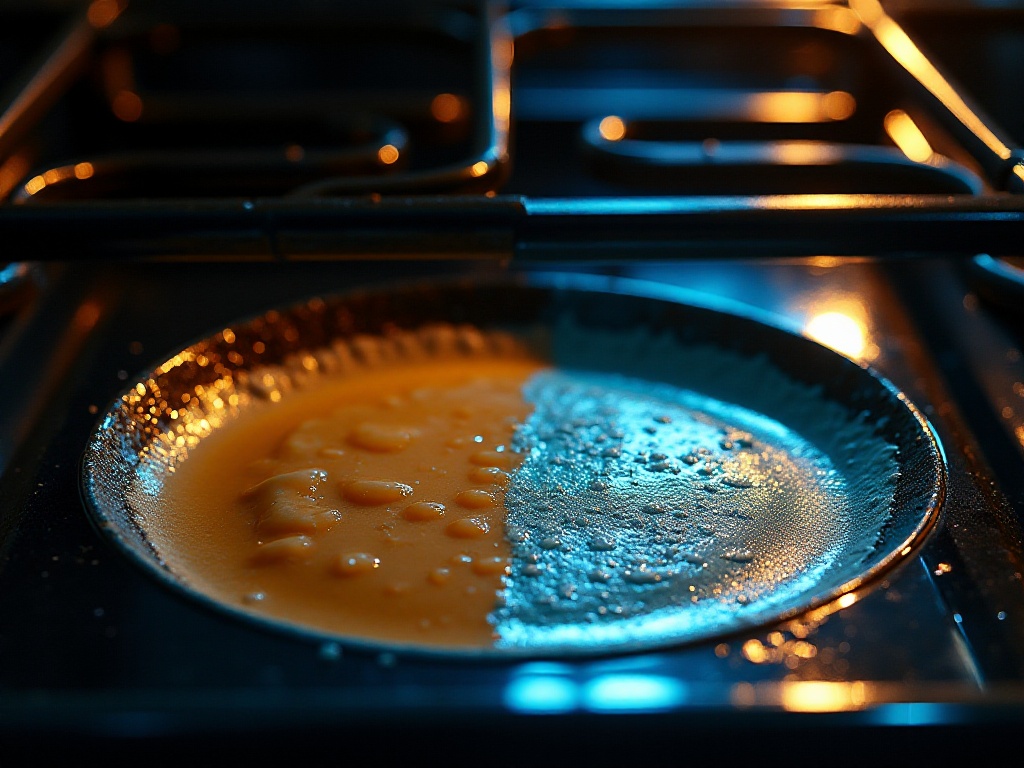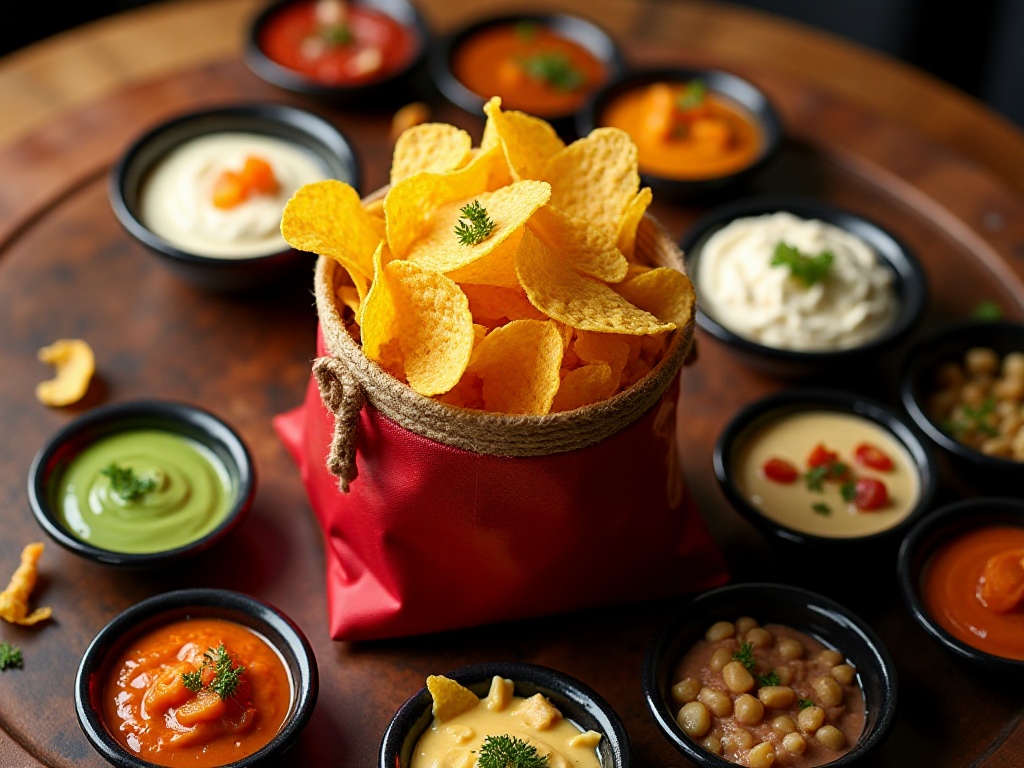The other day, something small happened in my kitchen that made me start rethinking the various details of life. I was preparing dinner when a bright red tomato rolled off the cutting board and splattered on the floor with a "splat." Looking at the tomato on the floor, I fell into deep thought: with so many repetitive actions in the kitchen every day, shouldn't we spend some time figuring out how to make these daily routines more elegant?
This small accident made me start paying attention to the little details in the kitchen. For instance, I discovered that placing a slightly damp paper towel under the cutting board prevents it from moving while chopping; and putting a wooden chopstick across the pot prevents water from boiling over when cooking noodles. These seemingly trivial discoveries have made my kitchen life increasingly manageable.
When it comes to ingredient preparation, peanut butter might be one of the most troublesome items. Every time you open a new jar, there's a layer of oil floating on top while the bottom is as dry as cement, making it extremely difficult to stir. After trying many methods, I finally found a perfect solution.
Here's how it works: when you buy new peanut butter, don't open it right away. Instead, store it upside down for 24 hours. This allows the oil to slowly permeate through the dry bottom layer. The next day, turn the jar right side up and rotate it 90 degrees, then back to its original position, repeating this motion four times. This simple operation makes the peanut butter exceptionally smooth, with no oil separation.
Since mastering this technique, my peanut butter no longer has the embarrassing "oil on top, dry clump on bottom" situation. Plus, this method is particularly environmentally friendly, requiring no extra tools and wasting no ingredients. Now, every time I make sandwiches, the peanut butter spreads evenly on the bread and tastes great.
Speaking of the art of ingredient preparation, I must mention making Italian salami roses. I learned this technique at a food festival, where I was amazed to see chefs transform ordinary salami slices into delicate roses. After getting home, I immediately started practicing and found it wasn't difficult at all.
First, select thinly sliced salami, as thick slices are harder to shape. Fold the salami slice in half and start rolling from the outer edge, maintaining proper tension. During rolling, slightly offset each layer to make the "petals" look more natural. Finally, secure the bottom with a toothpick, and a lifelike salami rose is complete.
This technique instantly elevated my plating game several levels. Last weekend, I hosted a small party and decorated the appetizer platter with salami roses. My friends were immediately won over by this creativity as they entered, taking photos with their phones, and our conversation naturally flowed from food to the art of living.
Actually, many ingredients have their unique characteristics. Take mangoes, for example - many people find removing the pit troublesome. But if you know that mango pits are flat and always parallel to the widest face of the fruit, cutting becomes much easier. Just slice down along both sides of the pit, then cut the remaining middle portion vertically to perfectly remove the pit.
As for garlic, many people find peeling it time-consuming. But if you put the whole head of garlic in a sealed bag and shake it vigorously, the cloves will automatically separate from their outer skin. Then place individual cloves on the cutting board and lightly press with the flat side of the knife, and the skin will easily peel off. This method not only saves time and effort but also avoids getting garlic smell on your hands.
Always tearing up when cutting onions? I discovered that putting onions in the refrigerator for 15 minutes before cutting greatly reduces the release of irritating compounds. Another method is to hold a small amount of cold water in your mouth while cutting onions, or light a candle near the cutting area - both can reduce eye discomfort.
Keeping fruits fresh is also a science. For strawberries, many people put them directly in the refrigerator after buying, but this can easily lead to spoilage. The correct method is to first soak the strawberries for a few minutes in a solution of one part white vinegar to ten parts water, which kills surface bacteria and extends shelf life. Then drain the strawberries, line the storage container with kitchen paper, and they'll keep fresh longer.

The use and maintenance of kitchen tools is definitely a major subject. Take the commonly used frying pan for example - many people have been troubled by burnt bottoms. Some scrub vigorously with steel wool, ending up removing the non-stick coating; others simply throw away and buy new ones, which is both wasteful and not environmentally friendly.
Actually, the solution is very simple: pour an appropriate amount of water into the pan, add a spoonful of baking soda, bring to a boil over high heat, then simmer for 15 minutes on low heat. During this time, the baking soda reacts with the burnt material, making it soft. After the water cools down, the stubborn burnt spots can be easily scraped off with a spatula.
I've been using this method for over half a year now with great results. Plus, baking soda is cheap and environmentally friendly, and won't cause any damage to the cookware. Now every time after cooking, I use this method to clean my cookware, keeping the bottom consistently clean.
Cleaning the oven is another headache. Oil stains and food residue often get baked onto the oven walls, and regular cleaners don't work well. After multiple attempts, I found a particularly effective method: slice a lemon and place it in an oven-safe container with hot water, then bake at 200 degrees for 15 minutes.
The lemon steam will soften stubborn grease, and after the oven cools down, the grease will easily wipe off with a cloth. This method not only effectively cleans the oven but also removes odors, leaving a fresh lemon scent.
Knife maintenance is also important. Many people habitually throw knives into drawers, which not only can scratch the drawer but also dulls the blade. I installed a magnetic knife holder in my kitchen, which protects the knives, saves space, and makes them easy to access.
Speaking of knife sharpening, there's also a simple trick. If you don't have professional sharpening tools handy, you can use the rough ring on the bottom of a ceramic cup as an emergency solution. Hold the blade at a 45-degree angle to the cup bottom and slowly sharpen a few times - the knife will become much sharper. However, this method is only suitable for temporary use; long-term use of professional whetstones is recommended.
Kitchen appliances also have many techniques. For rice cookers, many people encounter the problem of rice sticking to the pot. Actually, before adding water, you can first apply a thin layer of cooking oil to the bottom of the inner pot, which effectively prevents rice from sticking. Plus, leftover fried rice will be especially easy to serve.
Cleaning the soy milk maker is also a challenge. People who have used soy milk makers know that if not cleaned promptly, the pulp will dry on the blades and become very difficult to clean. My method is to immediately add warm water and a little dish soap after use, run the blender for a few seconds, and it can be easily cleaned.

Storage can be said to be a challenge every household faces. Especially in the kitchen, a space with limited room but numerous items, achieving both tidiness and practicality requires some techniques.
Speaking of storage, I recently discovered a particularly useful method for storing bedding. Many people face this challenge: a set of bedding often includes sheets, duvet covers, and pillowcases, which are difficult to keep organized when scattered. My method is to fold everything and stuff it into a pillowcase. This not only keeps the bedding set complete but also saves a lot of storage space.
I've been using this method for almost a year now, and it works great. When changing bedding, there's no more rummaging through boxes to find matching pieces - just grab a pillowcase and you have a complete set. Plus, this storage method prevents bedding from getting dusty and keeps it clean and tidy.
Kitchen spice storage is also a big issue. Previously, my spices were randomly placed in cabinets, and I had to dig through everything to find what I needed when cooking. Later, I bought a rotating spice rack and arranged the spices by frequency of use, putting the most frequently used ones in the most accessible positions. This not only saves time finding spices but also makes the entire cabinet look neat and organized.
Plastic bag storage is another challenge. Many people have the habit of collecting plastic bags, but these bags often accumulate and become a tangled mess. My method is to fold the plastic bags into triangles, like folding paper cranes. This not only saves space but also makes them convenient to use later.
Pot lid storage also requires technique. I installed a simple rack on the inside of the cabinet door specifically for storing pot lids. This not only makes full use of space but also allows the lids to drain while standing, preventing water accumulation.
Refrigerator storage also needs technique. I use transparent storage boxes to categorize different types of ingredients, such as separate areas for vegetables, fruits, and meats. Each storage box is labeled with the type of food and purchase date. This makes everything clearly visible and helps avoid food spoilage.

Life inevitably encounters various stains, but most stains can be easily handled if you master the correct methods.
For example, many people find paint stains on clothing particularly difficult to deal with. I discovered that nail polish remover can easily handle this. The specific method is to apply some nail polish remover to the stain, wait a few minutes, then rinse with clean water. However, when using this method, make sure to do it in a well-ventilated area, and it's best to test on a small area on the inside of the garment first to ensure it won't damage the fabric.
Dealing with label adhesive residue is also a common problem. Many people buy new furniture or items and are left with unsightly adhesive residue after removing labels. I found that heating with a hair dryer and then gently wiping with olive oil can completely remove these adhesive marks. This method works on various surfaces, including furniture, glass, and plastic.
Cleaning kitchen range hoods is also a big project. My method is to first spray some specialized cleaner on the range hood filter, wait 10 minutes for the cleaner to fully penetrate, then rinse with hot water. If the grease is particularly stubborn, you can soak the filter in a sink filled with hot water and dish soap for half an hour before rinsing.
Microwave cleaning also has tricks. Put half a bowl of water in a large glass bowl, add two lemon slices, and heat on high for 3 minutes. The steam will soften the grease inside the microwave, and the natural acidity of the lemon will remove odors. After it cools down, wipe with a cloth for easy cleaning.
Removing toilet scale isn't difficult either. Pour an appropriate amount of cola and let it sit in the toilet for 1-2 hours. The phosphoric acid in cola effectively dissolves scale, then gently scrub with a toilet brush and flush. This method is both environmentally friendly and practical, and won't damage the toilet's glazing.

Through this period of observation and practice, I increasingly feel that every detail in life is worth studying carefully. Those seemingly simple tips, when accumulated, can make our lives more relaxed and enjoyable. Just like that accidentally rolling tomato, although it felt annoying at the time, it led me to start re-examining various details in life.
Actually, the process of mastering these life skills is the process of rediscovering life. Solving each small problem brings a sense of achievement and makes us love life a little more. Every small setback in life can become an opportunity for new discoveries; the key is to maintain an attitude of keen observation and willingness to try.

Recently, I discovered some more particularly useful tips. For example, when serving snacks at parties, takeout boxes can be transformed into temporary trays. The specific method is to completely unfold one side of the box while keeping the other side vertical. This allows you to place chips on the vertical side and dips on the unfolded side, making it both neat and convenient. I tried this idea at last week's party and received unanimous praise.
There are also techniques for handling herbs. Many people find it time-consuming to remove herb leaves from their stems. Actually, you can thread the herb branches through the holes of a strainer, then gently pull back, and the leaves will automatically fall off, which is particularly efficient. This method not only improves efficiency but also maintains the integrity of the herb leaves.
These simple life hacks may seem basic, but they truly can make our lives more relaxed and enjoyable. I hope that by sharing these experiences, I can help more people discover the beauty in life and make each day more graceful and elegant.
 Previous
Previous
